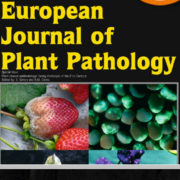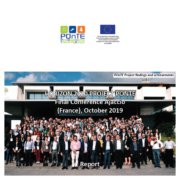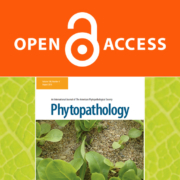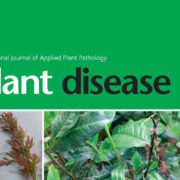Search for reservoirs of ‘Candidatus Liberibacter solanacearum’ and mollicutes in weeds associated with carrot and celery crops
ORIGINAL ARTICLE
Ana Alfaro-Fernández1, Mercedes Verdeguer1, Francisco Rodríguez-León1, Isabel Ibáñez1, Desamparados Hernández1, Gabriela R. Teresani2,3, Edson Bertolini2,4, Mariano Cambra2, María Isabel1
1Instituto Agroforestal Mediterráneo Universidad Politécnica de Valencia (IAM-UPV), Valencia, Spain. 2Instituto Valenciano de Investigaciones Agrarias (IVIA), Protección vegetal y Biotecnología, Moncada, Spain. 3Fitossanidade, Instituto Agronômico de Campinas APTA-IAC, Campinas, Brazil. 4Departamento de Fitossanidade. Faculdade de Agronomia Universidade Federal do Rio Grande do Sul (UFRGS), Porto Alegre, Brazil
Abstract
Currently, the main arthropod vectored pathogens associated with carrot and celery crop diseases are ˋCandidatus Liberibacter solanacearum´, Spiroplasma citri and different phytoplasma species. Mitigation strategies require elucidating whether these pathogens survive in the weeds of these Apiaceae crops, which can act as reservoirs. Weed surveys were conducted in a vegetative cycle (April to October 2012) in the spontaneous vegetation that surrounded crops affected by ˋCa. L. solanacearum´, S. citri and/or phytoplasmas. Sixty-three species of 53 genera that belong to 23 botanical families were collected in the main carrot and celery Spanish production area. Species were identified, estimating coverage and abundance, and conserved in herbarium. Samples were analysed by nested-PCR with universal primers for phytoplasmas detection, and were sequenced for identification purposes; by conventional PCR for S. citri and real-time PCR for ˋCa. L. solanacearum´. The only detected pathogens were ˋCa. Phytoplasma trifolii´ (clover proliferation group 16Sr VI-A) in Amaranthus blitoides and Setaria adhaerens and ˋCa. P. solani´ (stolbur group 16Sr XII-A) in Convolvulus arvensis. These pathogens were also sporadically detected in celery or carrot crops. Unexpectedly, neither ˋCa. L. solanacearum´ nor S. citri was detected in the weed samples, despite the relatively high prevalence of these pathogens (less than 66 % and 25 %, respectively) in the surveyed plots. This suggests that weeds do not play an epidemiological role as reservoirs in the spread of such organisms in the studied region. The use of pathogen-free seed lots and the control of vectors are crucial for preventing the introduction and spread of these economical important pathogens to new areas.
Published on June, 25 2016 by EUROPEAN JOURNAL OF PLANT PATHOLOGY








